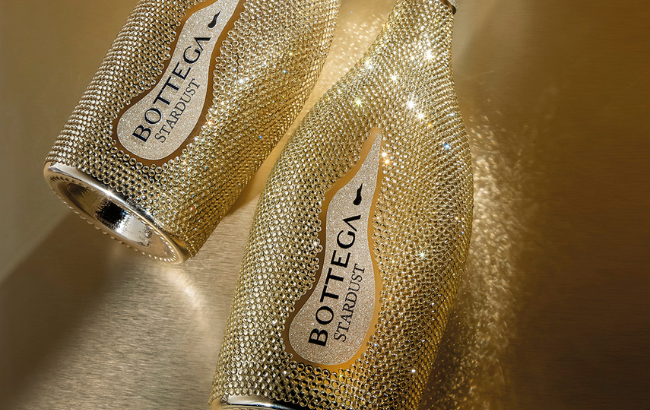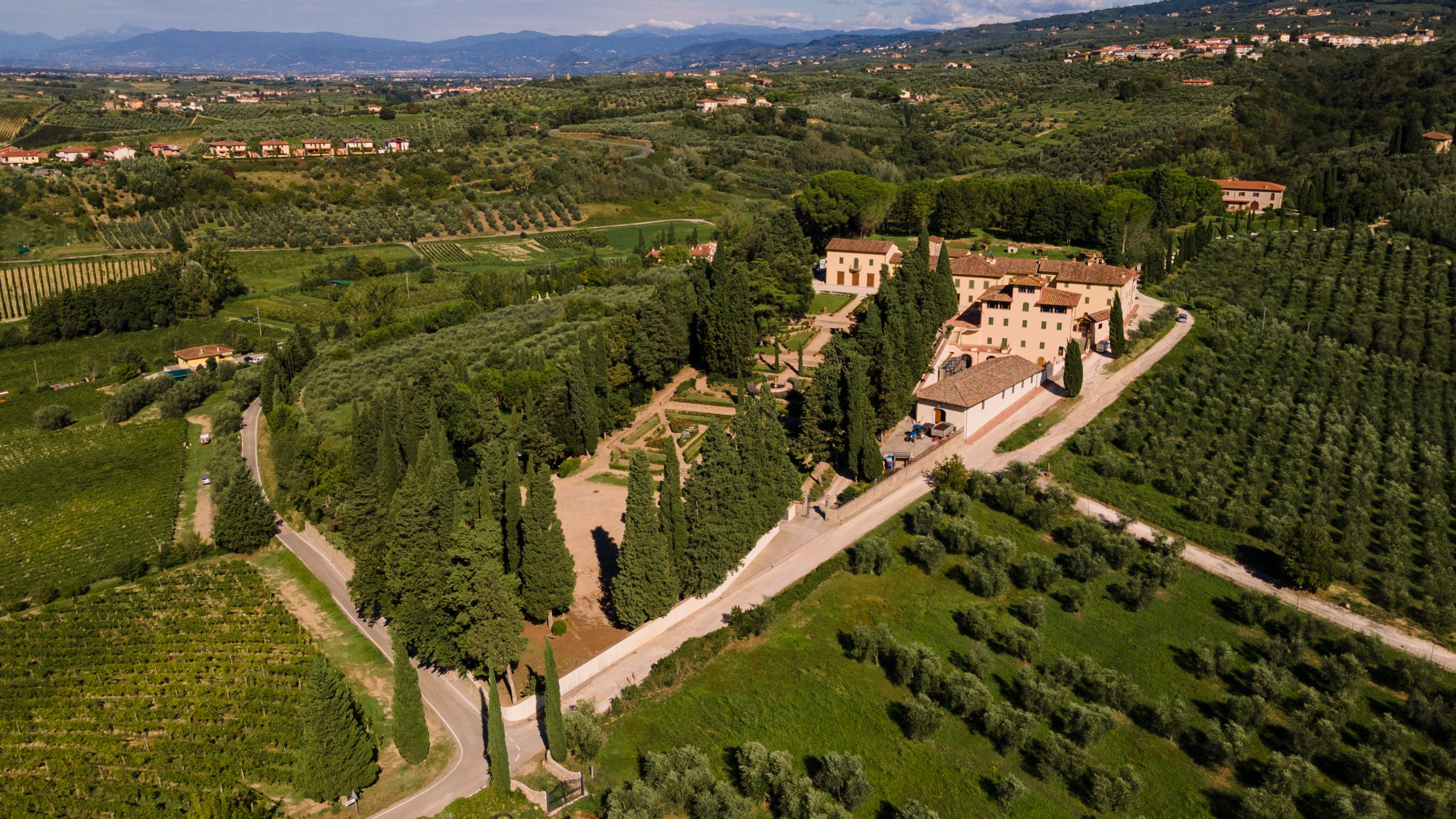The stories behind Orin Swift’s quirkiest wine labels
Dave Phinney doesn’t follow the flock. Having dreamt of becoming a lawyer, he had his head turned by wine during a semester in Italy in the mid ‘90s and never looked back.
After working a harvest at Robert Mondavi and planting experimental blocks of Zinfandel in Arizona, in 1997 Phinney began developing his debut wine brand, The Prisoner, a blend of California Zinfandel, Cabernet and Petite Sirah that rocketed to success shortly after it launched.
Phinney also prints his quirky wine labels on skateboard decks
Featuring a Goya etching on the label, Phinney made just 385 cases of the inaugural 2000 vintage. Eight years later he had grown The Prisoner into an 85,000-case brand.
Keen not to be shackled by its success, Phinney sold The Prisoner in 2008 to concentrate on his boutique brand, Orin Swift, named after his father’s middle name and mother’s maiden name.
Focusing on Rhône-style blends, Napa Cabernets and old vine Grenache, Phinney buys grapes from over 100 vineyard sites across California for his Orin Swift wines, which are unashamedly bold in colour, body and character.
Many of the wines are made from a mash up of grapes, including lesser-known varieties like Charbono. Phinney’s winemaking philosophy is simple: to find the best grapes he can get his hands on, let them hang long enough to become perfectly ripe, then express their character in the boldest way possible.
His quirky labels have helped propel Orin Swift to cult status in the US. Charmed by both the wines and their maker, in the summer of 2016, E&J Gallo snapped up Orin Swift, now a 100,000-case brand, as part of its premium push.
Keen to tell the Orin Swift story outside of the US, Gallo recently launched six of Phinney’s wines in the UK through Great Western Wine; including brooding Rhône blend Machete and opulent white Mannequin.
Phinney’s labels are as important to the Orin Swift narrative as the wine inside the bottle. We caught up with him to find out the stories behind 10 of his quirkiest wine labels and how he went about creating them.
Abstract
A labour of love, the label for Abstract took three years to compile and three weeks to create. Phinney ripped the 230 images that make up Abstract out of magazines bought at airports during his travels. Inspired by a collage an Italian designer had tacked up in his living room, Phinney thought his own version might make for an arresting wine label.
Featuring everyone from Elvis Presley, Earnest Hemingway and Tilda Swinton, to Paul Weller, Marilyn Monroe and The Queen, having amassed a sizeable collection of portraits, Phinney placed them together on a large table in his office that he sealed off so his work wouldn’t be ruined by a gust of wind – he decided not to glue them down.
In case tragedy struck, he took a picture of the developing collage each night for reference. The easiest part was photographing the work – all he needed was a ladder.
Like the collage, the wine inside the bottle, a blend of Grenache, Petite Sirah and Syrah, is made up of 100 different components sourced from multiple vineyards in multiple appellations throughout California whittled down over the course of a few months during multiple marathon tastings.
Mannequin
Phinney is often asked what came first, the label or the wine. In the case of Mannequin, made from Chardonnay, Sauvignon Blanc and Muscat from Sonoma and Atlas Peak, a song came first.
Driving around with the radio blaring, Roman’s Revenge by Nicki Minaj came on the radio and Phinney was struck by the line: ‘You at a stand still, mannequin’.
“It got me thinking about mannequins and their purpose to serve as stylised representations of the human form to showcase clothes. Clothing, much like wine, evolves over time to reflect trends, nature and creative whims, yet the mannequins always remain static,” he says.
The sinister photo of amputated shop dummies was shot by LA-based photographer Greg Gorman, who used his Hollywood contacts to source dozens of old mannequins bound for the scrapheap, most of which were missing their arms.
As is often the way with the creative process, Gorman took scores of photos but neither he nor Phinney were happy with the result until the mannequins were tossed to one side after the shoot and everything fell into place, on shot 540.
Palermo
Phinney’s most haunting label, which graces bottles of his Napa Valley red blend Palermo, is a chilling photo of a mummified priest wearing a red cape and a black hat known as a ‘biretta’, taken by National Geographic photographer Vincent J. Musi in a 16th century catacomb in Palermo, Sicily, after which the wine is named.
The arresting image is one of a series taken by Musi for National Geographic and reflects Phinney’s reverence for Cabernet Sauvignon. “There is such a sense of power and dignity to the image, which is how we think about great Cabernet. We just really respect it. It think it makes a statement about the wine,” says Phinney.
Palermo is made from Cabernet, Merlot and Malbec from Rutherford, Saint Helena, Atlas Peak and Coombsville. Using fruit that also goes into Phinney’s top reds, Mercury Head and Papillon, Phinney describes it as his most approachable Cabernet”, and “a true representation of Napa”.
Machete
Rather than just one label, there are a dozen different labels for Machete – a red blend that makes a hero of Petite Sirah from Northern California, with supporting roles from Syrah and Grenache.
Phinney got the idea for the label while driving home from San Francisco one day. Spotting what he thought was a white police car ahead of him, as he got closer he realised it was an old cop car that had been resold. Behind the wheel was a postman with his arm hanging out of the window puffing on a cigarette. The word ‘Killers” had been keyed onto the side of the car.
Partner Content
Inspired, Phinney set up a photo shoot with the cop car using Calistoga’s moon-like landscape as a backdrop. His initial idea of keying the word ‘Machete’ onto the car and shooting a machete-wielding model behind the wheel didn’t pan out.
Shot over the course of two days, it took over 10,000 attempts to get a dozen Phinney was happy with. “The model is always high up in the frame of every image. She’s always in a position of power. That was important to me,” he says.
Papillon
Phinney’s Papillon label is inspired by contradictions. While walking through a vineyard with his three-year-old daughter on his shoulders and thinking about what to call his next wine, a butterfly flew by and his daughter exclaimed, “Look, a papillon!” Phinney was flummoxed as to where she had picked up the French word for butterfly.
It was on his mind to create a label featuring tattoos on someone’s knuckles. “Papillon has eight letters so the idea clicked. I love the juxtaposition of this beautiful French word on these really gritty hands,” says Phinney, who used one of his grape growers as a hand model.
“He’s the nicest guy and a third generation old school farmer, which is exactly the look I wanted,” says Phinney, who asked his friend Greg Gorman to photograph the label in black-and-white.
China Doll
Phinney’s China Doll label has echoes of Mannequin, but is perhaps even more sinister. Keen to give a new life to discarded things, Phinney chanced upon the tiny broken porcelain doll in the photo – a remnant of an excavated doll factory outside Berlin – at the Bone Room curiosity shop in Berkeley.
The pale pink colour of the doll served as the inspiration for the shade of rosé he wanted to create from Syrah and Grenache grown in the Capay Valley. “Delicate and fragile, like the doll on the label, the wine exudes the strawberry shortcake, wild raspberry and crisp Pink Lady apple characteristics that make rosé perfect for almost any occasion,” says Phinney.
Eight Years in the Desert
With uneven ripening, high alcohol and a propensity to rot, Zinfandel isn’t the easiest grape to grow. This didn’t put longtime Zinphomaniac Phinney from making his first ever wine from it in 1999, of which he released 99 cases.
It wasn’t an easy ride – Phinney lost a third of his crop after spraying sulphur late in the year, while a heat spike fried the morning side of the vines. Finding his stride a year later, Phinney released his first vintage of The Prisoner, a blend of Zinfandel, Cabernet and Petite Syrah, in 2000.
Featuring a Goya etching on the label, the wine was an instant hit and grew to become an 85,000-case brand. In 2008 Phinney sold The Prisoner brand and agreed with its buyer not to make Zinfandel for eight years.
“Like a child who only wants to do what he’s told not to do, I began to plot my return. At the time 2016 seemed like an eternity away,” says Phinney who agonised for months trying to come up with a name and label worthy of his long-awaited comeback.
While waiting for inspiration to strike, Phinney wrote a book of short stories, the first of which was called Eight Years in the Desert. Without trying he’d found the name and label concept (a black-and-white desert landscape overlayed with pale pink sky) for his beloved Zin, which he’s enjoying working with again. “It’s a bit like riding a bike, only the bike is now a motorcycle and the rider has a lot more experience,” he says.
Blank Stare
Phinney thinks of wines as either masculine or feminine, and his labels often reflect that. The label for his Blank Stare Sauvignon Blanc, made from grapes sourced from the Russian River Valley in Sonoma, with a dash of old vine Semillon from Sonoma’s Monte Rosso vineyard, flags up the femininity of the wine inside the bottle.
Using the collage approach he took for Abstract, the layering effect of a pair of gouged out eyes over a black-and-white photo of a female model is sinister, which is exactly the look Phinney was going for. “It has the desired effect. A lot of people have told me it creeps them out,” says Phinney.
Mercury Head
Phinney’s simplest bottle design is used for his most expensive wine – Mercury Head. The inspiration for the bottle came when Phinney chanced upon a Liberty dime in a handful of small change.
“It reminded me of how much I enjoyed collecting coins as a kid. The Liberty dime, affectionately known as ‘Mercury head’, was my always my favourite,” says Phinney. The coins haven’t been in production since 1945, but that didn’t deter him from his idea to stick a Liberty dime to the front of every bottle of Mercury Head.
“It took a little effort at first finding the dimes from dealers and coin collectors, but we have a good supply now. People even send us the coins from their empty bottles to use,” says Phinney. The grapes that go into Mercury Head hail from Phinney’s best lots in the Napa Valley.
Slander
Having troubled and toiled for a decade to make a Pinot Noir worth bottling, Phinney finally got his recipe right in 2015 after learning the importance of picking the finicky grape at exactly the right moment of ripeness (in this case 25 brix) before it ends up tasting like strawberry jam.
The label is one of the simplest in the Orin Swift range, and is meant to look like a piece of duct tape wrapped around the bottle in a nod to labelling barrel and tank samples when he first started out.
“Two things you always have in a winery are duct tape and marker pens… and cold beer,” Phinney jokes. He works with Pinot from the Santa Rita Hills in Santa Barbara and the Sonoma Coast. “Slander is the only wine I make that my wife will drink and she has a much better palate than me.”





Very good wine and we love the collage label. So different and interesting. We enjoyed looking at all the old actors and actresses and trying to name them. Who’s the actor with the thin moustache who’s large face appears at the top left edge of the label? We couldn’t figure him out.
Thanks
Connie